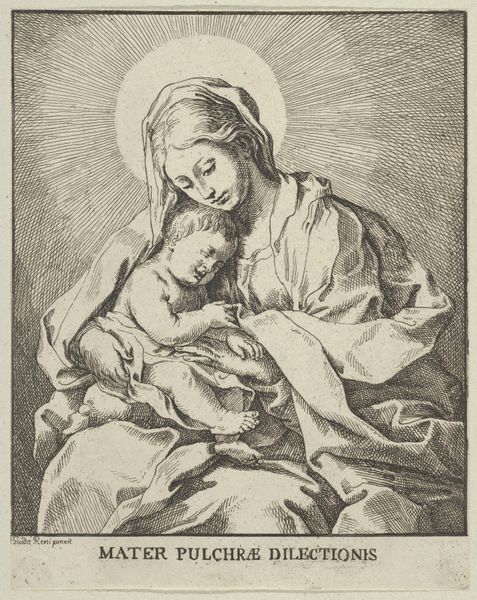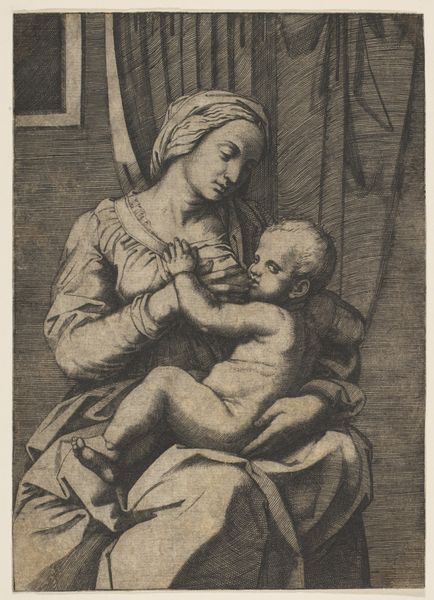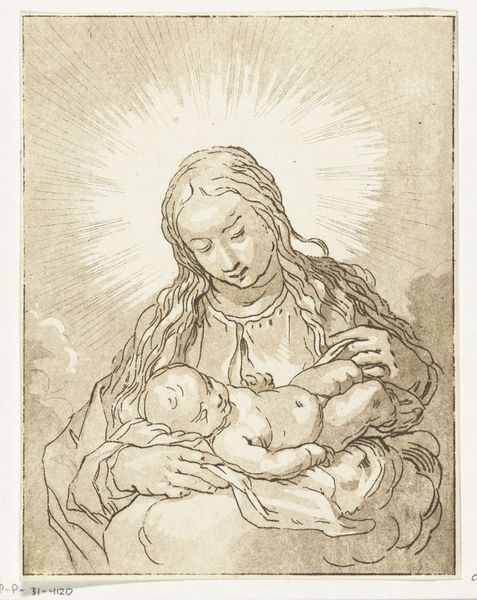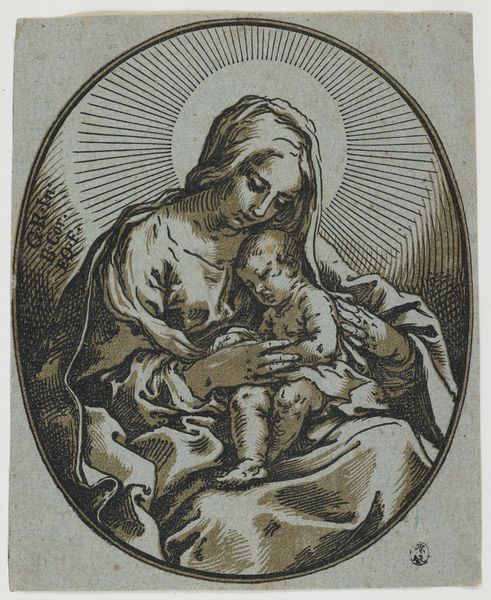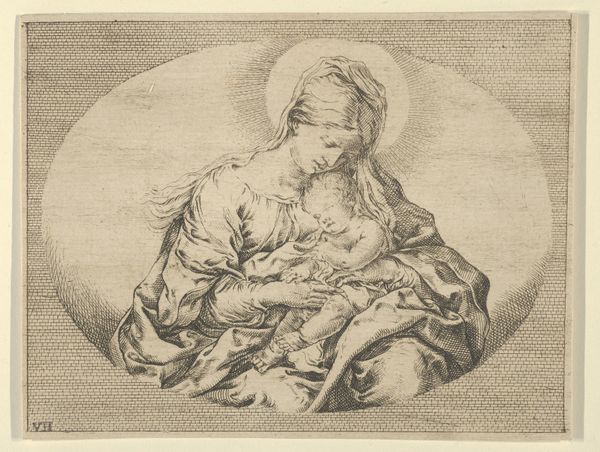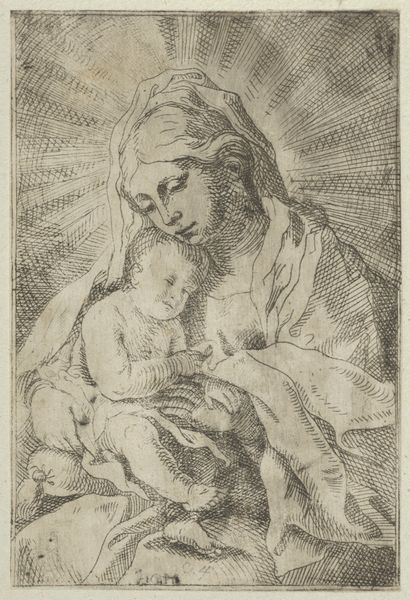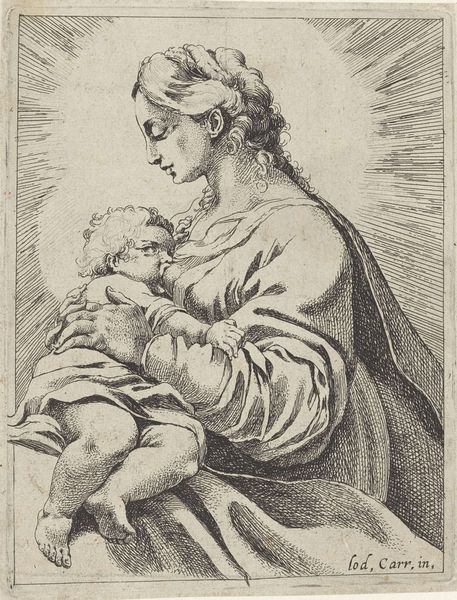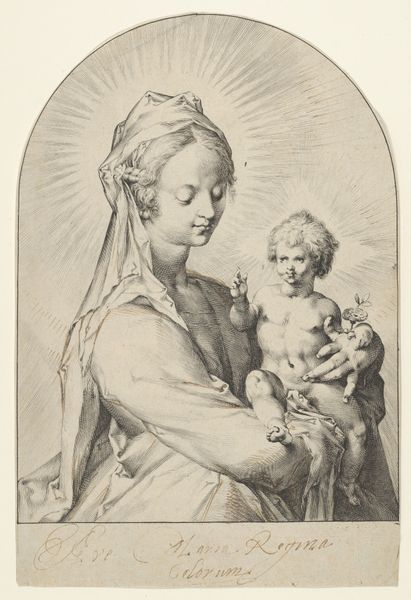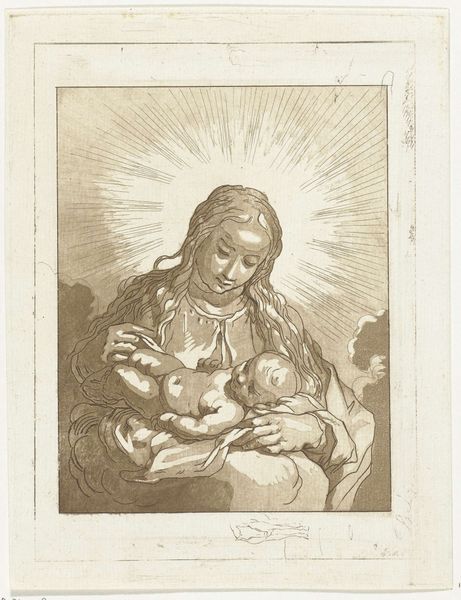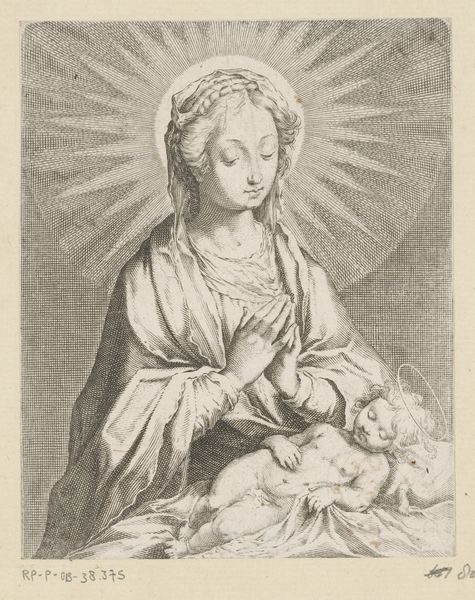
The Virgin holding the infant Christ, after Reni 1595 - 1645
0:00
0:00
drawing, print
#
portrait
#
drawing
#
baroque
# print
#
figuration
#
history-painting
#
virgin-mary
#
christ
Dimensions: Sheet (Trimmed): 4 7/16 × 5 7/8 in. (11.3 × 15 cm)
Copyright: Public Domain
Curator: What a tender portrayal of motherhood. We’re looking at “The Virgin holding the infant Christ, after Reni,” an anonymous print made sometime between 1595 and 1645, now housed at The Metropolitan Museum of Art. Editor: Yes, the tenderness strikes me too. It's incredibly gentle; a very soft image despite the medium being a print. The etching, I assume, is giving a sense of very controlled, subtle light. Curator: Precisely. This work evokes not only a devotional sentiment but also plays into established visual traditions surrounding motherhood and divine grace. The virgin Mary’s serene downward gaze at Christ suggests humility but also reverence, while the radiant halo that defines their divinity firmly cements them as key figures in Christian iconography. The very subtle rendering certainly also recalls painting. Editor: That halo is doing some heavy lifting, isn't it? The very faint radiating lines create the image of an emblem so entrenched it is almost a visual shorthand for the viewer to recognize them. Without it, one would not get any explicit feeling of divinity? Curator: It's an interesting point about cultural cues versus inherent visual holiness. That halo speaks to centuries of iconographic coding where light equals divinity. We see this echoed across religions and cultures in similar motifs of enlightenment and spiritual awakening. By not reinventing that emblem the artwork instantly situates itself within that existing system of meaning. This visual continuity allowed the image to be easily legible to wide audiences who could grasp the essential story being told. Editor: This composition makes me curious about the distribution and function of prints such as this, however, was it to further enhance established ideologies through religious images, perhaps reaching audiences paintings could not due to cost or limited mobility? Were these also distributed within domestic settings as a quiet reminder of values? Curator: Absolutely, these prints played a vital role in disseminating images of religious figures throughout society. Unlike paintings, prints were more accessible in cost and mobility, making them available to a wider segment of the population, which includes, in addition to the Church itself, individuals or schools. In private homes these could function as focal points for personal devotion, offering daily reminders of faith. Editor: So, it served as both an intimate token and a powerful tool for a more macro socio-religious movement. Curator: Exactly. The artwork operated within multiple spheres of influence, shaping individual spiritual experiences, as well as supporting larger institutional narratives. Editor: Fascinating how an image both embodies and furthers the socio-historical dynamics within which it was made. I do appreciate the more accessible insights offered through printmaking.
Comments
No comments
Be the first to comment and join the conversation on the ultimate creative platform.

